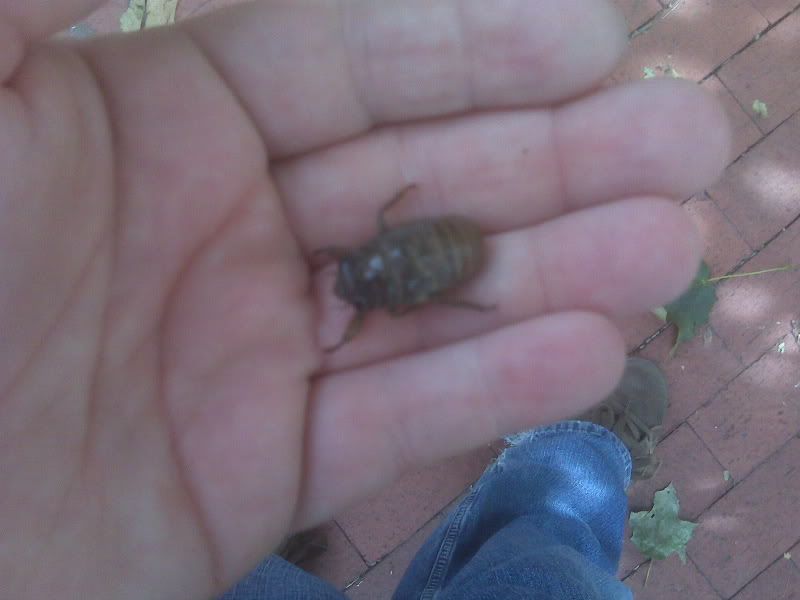Ever wondered what happens when an insect sheds?
Quite a bit of what I blog about is going to come from my entomology class notes. To me, blogging is a way to help me understand various papers by forcing me to read them and then regurgitate the information in a form that's easy for people to understand. This is no different.
Before I go into all the hormoney goodness that is the moulting process, first we need to understand exactly an insect grows and how it's body is set up.
An insect is covered in a shell called an exoskeleton. It doesn't look like it, but insects are basically wearing suits of armor. All the time. It's actually pretty cool, and it's great protection. In some cases, especially ironclad beetles but sometimes velvet ants, entomologists actually have to drill holes in the insect before pinning it.
The whole exoskeleton thing is great...but there's a problem. It's too damn good. The insect actually can't grow because the exoskeleton can't expand with the insect. The insect solves this problem by changing it's clothes. Here's an example. A larval cicada looks something like this:

 Yes...the pictures suck. I know. Blackberry needs to make a cellphone camera with a macro function.
Yes...the pictures suck. I know. Blackberry needs to make a cellphone camera with a macro function.So what, exactly is this exoskeleton made of? It's a polymer, kind of like plastic (but not). It's made of proteins and chitin. The insect's epidermis ('skin'), only a few cells thick, sits beneath it and is more or less attatched to it.
So...what makes that little bug turn into one of those things which scream for ladies at the tops of trees?
Well first specialized cells in the brain, called neurosecretory cells secrete a substanced called 'brain hormone'. The brain hormone then circulates in the insect's bloodstream, where it ends up in a gland at the front of the thorax (prothoracic gland). This gland then secretes another hormone called ecdysone (ecdysis=moulting). Ecdysone is the hormone that directs the various activities related to moulting.
The cells in the epidermis start rapidly dividing in response to ecdysone and becomes closely packed. The exoskeleton then seperates from the epidermis in a process called apolysis. At this point, a substance called moulting fluid is produced.
Moulting fluid contains all sorts of proteases and chitinases (protease=noms proteins, chitinase=noms chitin) which digest almost all of the old cuticle. The digested cuticle is then reabsorbed and recycled by the insect.
While the old cuticle is being digested, the new cuticle starts growing. There are several layers that are formed, but the important thing is that the outer layer is resistant to enzymes. When everything from the old cuticle is absorbed and when the new cuticle is complete, the insect actually sheds it's skin.
The whole thing is initiated by a hormone called eclosion hormone which is secreted by the brain. When the insect moults depends on the species. Some insects just moult when they find a nice, cozy place and some moult at specific times of days. Either way, the actual process is pretty similar through all insects.
The insect swallows air or water and raises it's blood pressure and this causes the exoskeleton to split along already weakened lines. The insect just kind of squeezes out, usually head and thorax first. After this happens, the insect expands it's cuticle by again swallowing air or water and using blood pressure to expand the cuticle. At this time, the cuticle is pale and soft and the insect is vulnerable. It soons hardens and becomes pigmented again. This process is controlled by another hormone called bursicon.
These hormones, and others are sometimes used in pest control. I'm sure I'll eventually write a post about those hormones, as well.
Here's what that little bug turns into, by the way:


Here's a time lapse video of the same thing:
Pedigo, Larry P., Rice, Marlin E. (2009). Entomology and Pest Management (6th ed). New Jersey: Pearson Education
Labels: Blag, Entomology, Textbook Blogging


0 Comments:
Post a Comment
Subscribe to Post Comments [Atom]
<< Home